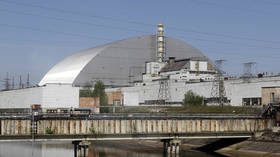Soyuz coolant leak may force rescue mission to ISS

A coolant leak at the Soyuz MS-22 spacecraft could lead to Russia sending an empty capsule to the International Space Station (ISS) to bring the stranded Russian and US crewmembers back to Earth, Roscosmos space agency has said.
Sergey Krikalev, the head of human spaceflight programs at Roscosmos, said during a video-conference on Thursday that no final decision on the matter has been made.
Experts from the Russian and the US space agencies have “worked together as they always have” to investigate the leak, which occurred on the Soyuz last week, Joel Montalbano, NASA ISS program manager, said. “The teams are going back and forth. We’re constantly exchanging data.”
It was planned that the spacecraft would be used by Russian cosmonauts Dmitry Petelin and Sergey Prokopyev, as well as NASA astronaut Frank Rubio, to return from orbit. The trio have been at the station since September.
The hole, a few millimeters across, affected a coolant pipe in the Soyuz MS-22, according to a probe by Roscosmos and NASA. The liquid released as a result of the leak has not contaminated the exterior surfaces of the ISS, such as solar panels or windows.
Thermal analysis is underway to determine whether the Soyuz MS-22 is fit to bring the crew home or “or if we need to send a rescue vehicle to the station in the future,” Krikalev said.
In the latter case, a Soyuz MS-23 would have to fly to the ISS without a crew to pick up Petelin, Prokopyev and Rubio, with the Soyuz MS-22 returning to Earth empty, he explained.
A Soyuz MS-23 is scheduled for launch in March 2023, but its departure could be moved forward to February if the situation demands, the Roscosmos representative assured. If this happens, future crew rotation missions to the ISS would have to be “readjusted,” Krikalev added.
The exact reason for the spacecraft leak has not so far been established, but both sides have ruled out any suggestion of it being caused by the Geminid meteor shower, which occurs annually.
“Both the trajectory team in Houston and the trajectory team in Moscow confirmed it was not from the meteor showers,” Montalbano said.
It is yet to be confirmed if the hole in the Soyuz MS-22 was caused by naturally occurring micrometeoroids, man-made debris in orbit or “some other type of failure,” he added.













